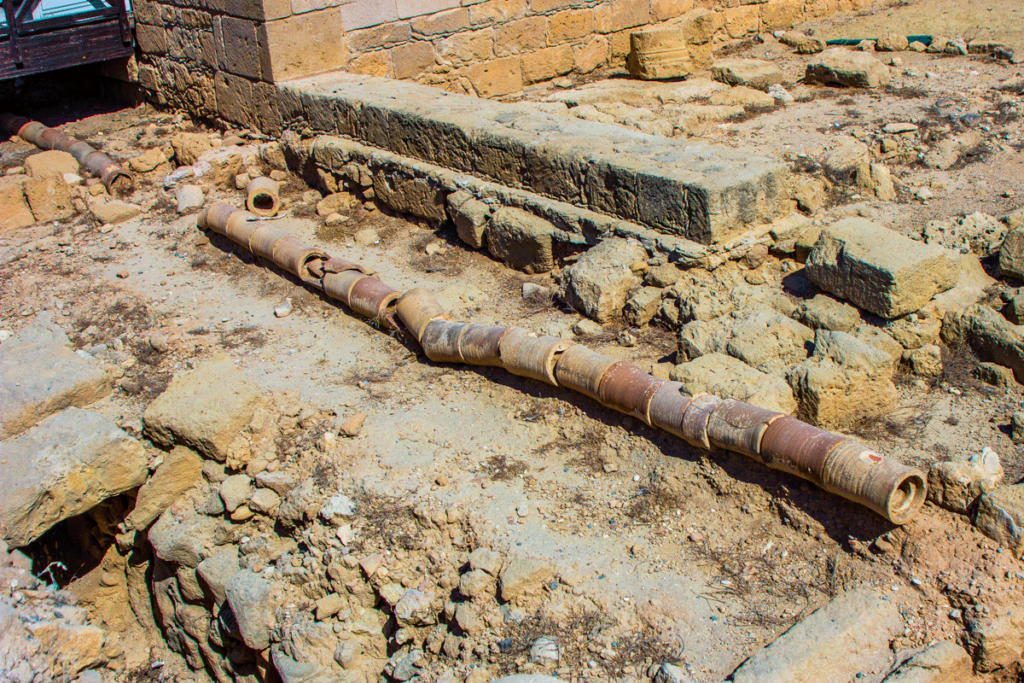At Rainaldi, we love what we do, which is why we love plumbing. We love it so much, we’re celebrating World Plumbing Day on March 11, and to do so, we’re sharing some plumbing info with you.
At first, you might think that plumbing is a pretty dull subject. However, have you ever really thought of who came up with the idea of underground pipes carrying freshwater one way and sewage another? It’s pretty mind-boggling if you think about it.
According to Wikipedia, ancient civilizations needed to find a way to provide fresh water while removing wastewater from the public baths. Clay sewer pipes were discovered from around 4000 BC near modern-day India and Pakistan. Copper pipes were found in ancient Egyptian ruins from about 2400 BC, located at the Pyramid of Sahure.
And then, there are the famous aqueducts of Ancient Rome, spanning approximately 57 miles of the Roman Empire. The aqueducts moved the water to tanks distributed through tunnels of pipes to baths, fountains, and toilets. However, after some years of the stone aqueducts, Roman engineers started to use lead piping as a replacement. While this may have improved delivery, it led to a rise in deaths and miscarriages due to lead levels rising to as much as ten times the safe consumption levels. (That wasn’t a smart choice.)
On a more positive note, the first flushing toilet is said to have been invented in 1596 in England by Sir John Harrington, Queen Elizabeth I’s godson. Now we know why the bathroom is called “the John.”
America, then a gathering of colonies in the mid-1600s, saw the first citywide water system built in Boston. This system was called “the Conduit” and was made not only for personal use but also in fighting fires in the city. However, this system was much more rugged than that of the Ancient Romans, with the pipes in Boston made from hollowed-out tree logs. (Excuse me, Miss. There are splinters in my water.)
More than 100 years later, New York City continued to use the hollowed-out tree logs; however, engineers would drill holes in the pipes and close them up with plugs, thus creating the first water system for firefighters’ control in when and how the water was removed from the pipes.
Philadelphia became the first American city to get rid of the wooden plumbing system and use cast-iron in 1804. This improvement allowed for more regulation in water consumption and pressure than its predecessors. (And it meant no more oak-flavored water for dinner.)
Other notable dates in plumbing history:
- 1829 – Boston’s Tremont Hotel became the first hotel to offer indoor plumbing for guests.
- 1857 – “Medicated paper” made from hemp and aloe was sold in flat sheets as toilet paper was first offered commercially in America.
- 1885 – Thomas William Twyford, a British manufacturer, invented ceramic, flushing toilets.
- 1952 – Plastic piping was introduced in the United States, thanks to a shortage of metals during World War II. Polyvinyl chloride (PVC) pipes were first used three years later.
- 1974 – Rainaldi Home Services was started to bring quality and timely service to the citizens of Orlando, Florida, and its surrounding neighbors.
After reflecting on how far plumbing has come, it makes us wonder what could be on the horizon for plumbing technology?

